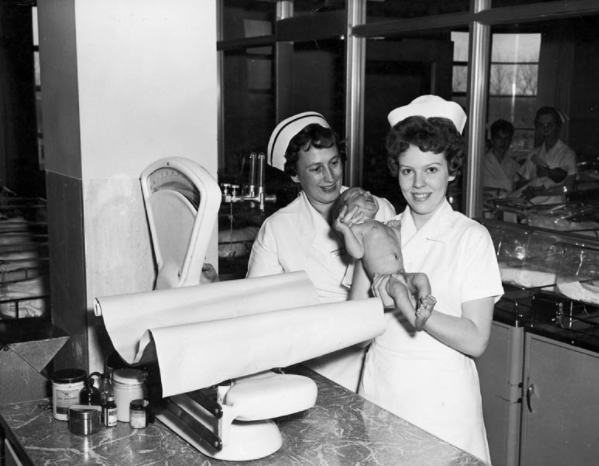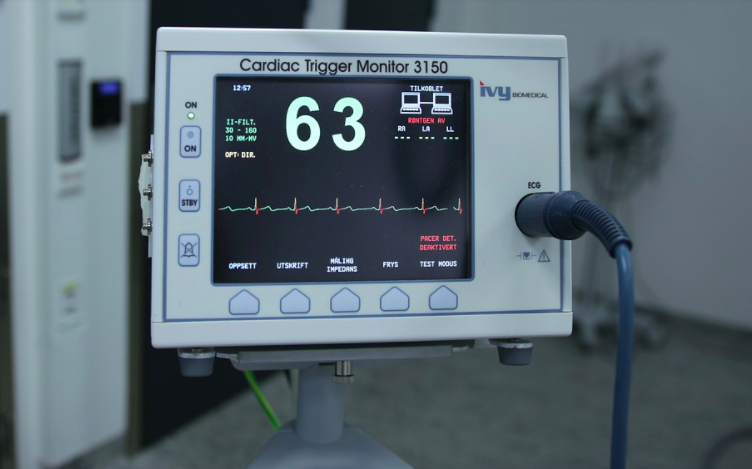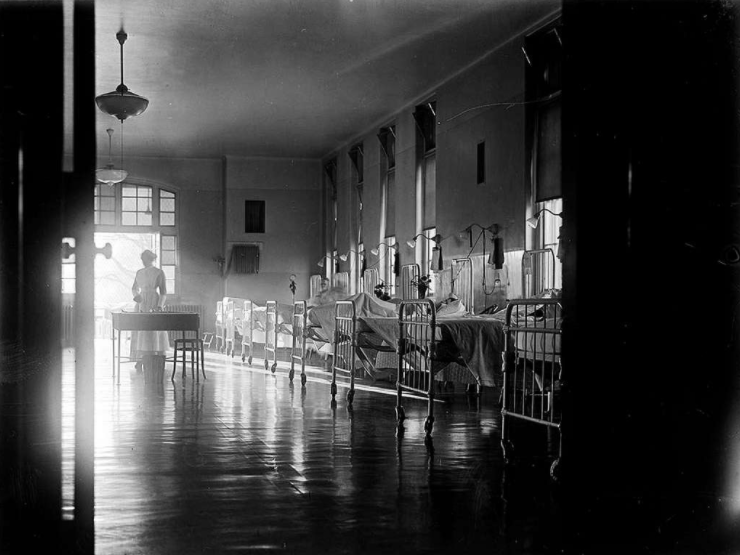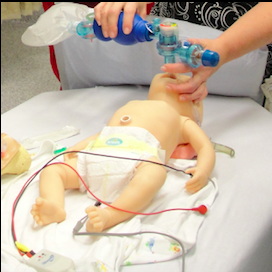
Inherent to the art of nursing is the establishment of the therapeutic relationship within which the 3C’s of nursing, compassion, communication and caring (Motter, Hassler & Anthony, 2021, March 26) can be realized. Engaging in compassionate care with a patient who has experienced trauma, however, can induce vicarious trauma in the nurse (Isobel & Thomas, 2021). Vicarious trauma has a significant impact on nurses and is an important consideration to nursing educators who, by providing a positive learning environment in the form of a trauma informed approach, can reduce the impact of vicarious trauma on student nurses during clinical practicums and simultaneously help them to develop strategies to alleviate the its long term effects. This paper will investigate three articles: Potentially Perilous Pedagogies: Teaching Trauma Is Not the Same as Trauma-Informed Teaching (Carello & Butler, 2014); Risky teaching: developing a trauma-informed pedagogy for higher education (Harrison, Burke & Clarke, 2020); and, Abolitionist Pedagogy in the Neoliberal University: Notes on Trauma-Informed Practice, Collaboration, and Confronting the Impossible (Whynacht, Arsenault & Cooney, 2018) to ascertain key points, implications for innovations in teaching and learning, determine article strengths, weaknesses and significance and finally, implications for nursing education.
Key Points from Articles
The authors of all three articles assess the impact that teaching trauma-related content has on students and instructors. It is noted that students dealing with trauma are more at risk of being re-traumatized. Existing trauma among students is high. “By the time youth reach college, 66% to 85% report lifetime traumatic event exposure and many report multiple exposures” (Carello, & Butler, 2014, p. 157).
Harrison, Burke and Clarke (2020) discuss that there are serious risks to students’ mental health when using teaching strategies that are intended to induce an emotional connections between the learner and the people involved with trauma related content. Some teachers believe that activating emotional responses in students is good teaching (Carello, & Butler, 2014) and can lead to transformational learning when in fact, it could be re-traumatizing them. Whynacht, Arsenault and Cooney (2018) note that in a course based on abolitionist pedagogy, traumatizing course content lead to students disclosing past traumas to instructors, leaving instructors at risk for vicarious trauma (Carello, & Butler, 2014). The articles conclude that meaningful learning can occur when teaching trauma-related content, without re-traumatizing or inducing vicarious or entirely new traumas in students, if established processes like that of trauma informed pedagogy are in place.
Implications for Innovations in Teaching and Learning
Taking a risk to create emotional connections to generate compassion between the learner and the people involved with trauma related content requires processes to ensure safety for learners and instructors (Harrison, Burke & Clarke, 2020; Whynacht, Arsenault & Cooney, 2018). These processes have not been historically established in the educational setting. Integrating trauma informed pedagogy into university courses is a vital innovation to support the mental health of students and instructors and to enable meaningful learning (Carello, & Butler, 2014; Harrison, Burke & Clarke, 2020).
The processes of trauma informed pedagogy are still evolving. Presently, these include; trauma awareness – prevalence, signs and symptoms, paths to recovery (Harrison, Burke & Clarke, 2020); the prioritization of student safety and an awareness that risky teaching does not lead to transformational learning (Carello, & Butler, 2014); the establishment of a collaborative community of practice (Whynacht, Arsenault & Cooney, 2018); access to professional mental health support (Carello, & Butler, 2014); and, the development of curriculum that is culturally competent and trauma aware (e.g., limit exposure to traumatic content, vary the intensity of traumatic content, provide information on self care) (Carello, & Butler, 2014). The implementation of these processes in the university setting is achievable. I believe that trauma informed pedagogy is a critically important innovation that should be implemented in educational settings.
Articles’ Strengths, Weaknesses, and Significance
The articles highlight that trauma is common and that there is a risk of re-traumatizing or creating direct and indirect trauma when using pedagogies to creating emotional connections between learners and trauma survivors or trauma related content. The articles provide a variety of perspectives that ranged from a compilation of data of emotional responses from learners engaging with a trauma survivor (Harrison, Burke & Clarke, 2020), a narrative account from instructors of a social justice course (Whynacht, Arsenault & Cooney, 2018) and research into how engaging with trauma-related content or using trauma inducing practices such as trauma exposure or forced disclosures can have detrimental impacts on students (Carello, & Butler, 2014). The articles offer a variety of perspectives from both students and instructors. This offers depth and provides insights into the complexity of trauma in the classroom. The principles for trauma informed practice that are outlined are applicable to the Eurowestern university setting. Whynacht, Arsenault and Cooney (2018) highlight the importance of contextual influences on the implementation of actions in their discussion of how they tried to build a community of practice among students in their course but had challenges due to the university’s culture of high levels of competition among students.
A weakness for the articles is that they are all are from the Eurowestern perspective. The lack of diversity among the articles limits insights into what trauma informed practice would be in other cultures. While the articles offer some general actions that instructors can take, they do not provide overarching principles to guide the delivery of trauma informed pedagogy. Carello and Butler (2014) state “. . . more interdisciplinary research is clearly needed in this area, as most of the available literature is anecdotal and based on clinical training, and it does not explicitly adopt a trauma-informed framework” (p. 163).
Implications for Nursing Education
Trauma among students is common. As part of their therapeutic engagement with patients, nurses are at an additional risk of experiencing vicarious trauma at the workplace (Isobel & Thomas, 2021). Trauma can manifest as a wide range of complex emotional responses (Harrison, Burke & Clarke, 2020) and may not always be identified as being a trauma response. As a nurse educator, I need to realize that all students are at risk and that at anytime in a course, a student could be experiencing direct or vicarious trauma. I must also recognize that I too have both direct and vicarious trauma from my personal and professional life. “To use trauma-informed pedagogy requires a communal recognition of trauma—both acknowledging its existence and acknowledging the traumas we each have faced individually or as a group, and then responding to that through both action and curriculum (Whynacht, Arsenault & Cooney, 2018, p. 151).
Emotional safety is a necessary adjunct to learning (Carello & Butler, 2014). I need to ensure that the students and I establish a community of practice in which we collaboratively build a trauma-informed space. I need to provide students with information on what trauma is, ways of coping with trauma (Whynacht, Arsenault & Cooney, 2018), and means of emotional self-regulation. Students need to be aware how to access professional mental health counseling and be able to recognize when they require professional support. I need to understand that learner performance may be impacted by trauma (Carello & Butler, 2014) and that I need to reach out to students that are encountering challenges with assignments. I need to develop curriculum that is trauma aware and culturally competent. I must ensure that I am engaging with the students during their clinical and allow for them to have time away, with support provided as needed, from the clinical to process exposures to traumatic events and narratives of survivors. I need to ensure that course content is balanced and that modules do not have a sustained focus on trauma-related content. I need to understand that students with trauma are vulnerable to people in authority (Carello & Butler, 2014) and that “ . . . supportive relationships are created through trust, which is gained through honesty, responsibility, and dialogue” (Whynacht, Arsenault & Cooney, 2018, p. 148).
Conclusion
Trauma among students is common. Nursing students are particularly vulnerable to the development of vicarious trauma by virtue of the establishment of the therapeutic relationships with patients who have experienced trauma. Vicarious trauma has a significant impact on nurses and is an important consideration to nursing educators who, by providing a positive learning environment in the form of a trauma informed approach, can help student nurses develop strategies to alleviate the long term effects of vicarious trauma. This paper investigated three articles: Potentially Perilous Pedagogies: Teaching Trauma Is Not the Same as Trauma-Informed Teaching (Carello & Butler, 2014); Risky teaching: developing a trauma-informed pedagogy for higher education (Harrison, Burke & Clarke, 2020); and, Abolitionist Pedagogy in the Neoliberal University: Notes on Trauma-Informed Practice, Collaboration, and Confronting the Impossible (Whynacht, Arsenault & Cooney, 2018) and ascertained key points, implications for innovations in teaching and learning, determined article strengths, weaknesses and significance and finally, outlined implications for nursing education.
References
Carello, J. & Butler, L.D. (2014). Potentially Perilous Pedagogies: Teaching Trauma Is Not the Same as Trauma-Informed Teaching. Journal of Trauma & Dissociation,15,153–168. Taylor & Francis Group, LLC.
Harrison, H., Burke, J. & Clarke, I. (2020): Risky teaching: developing a trauma-informed pedagogy for higher education. Teaching in Higher Education, 1-15. Routledge. DOI: 10.1080/13562517.2020.1786046
Isobel,S. & Thomas, M. (2021). Vicarious trauma and nursing: An integrative review. International Journal of Mental Health Nursing. 1-13. John Wiley & Sons Australia, Ltd. DOI: 10.1111/inm.12953
Motter, T., Hassler, D. & Anthony, M.K. (2021, March 26). “The Art of Nursing Becomes a Celebration of Nurses.” OJIN: The Online Journal of Issues in Nursing 26(2). DOI:10.3912/OJIN.Vol26No02PPT72 https://doi.org/10.3912/OJIN.Vol26No02PPT72
Whynacht, A., Arsenault.E. & Cooney, R. (2018). Abolitionist Pedagogy in the Neoliberal University: Notes on Trauma-Informed Practice, Collaboration, and Confronting the Impossible. Social Justice, Vol. 45(4), 141-162.









